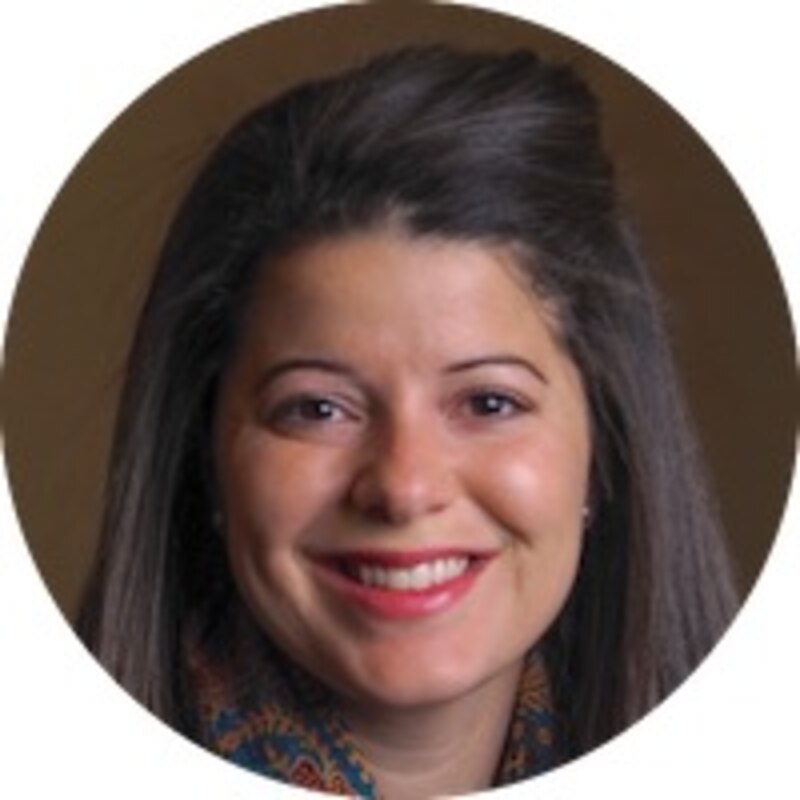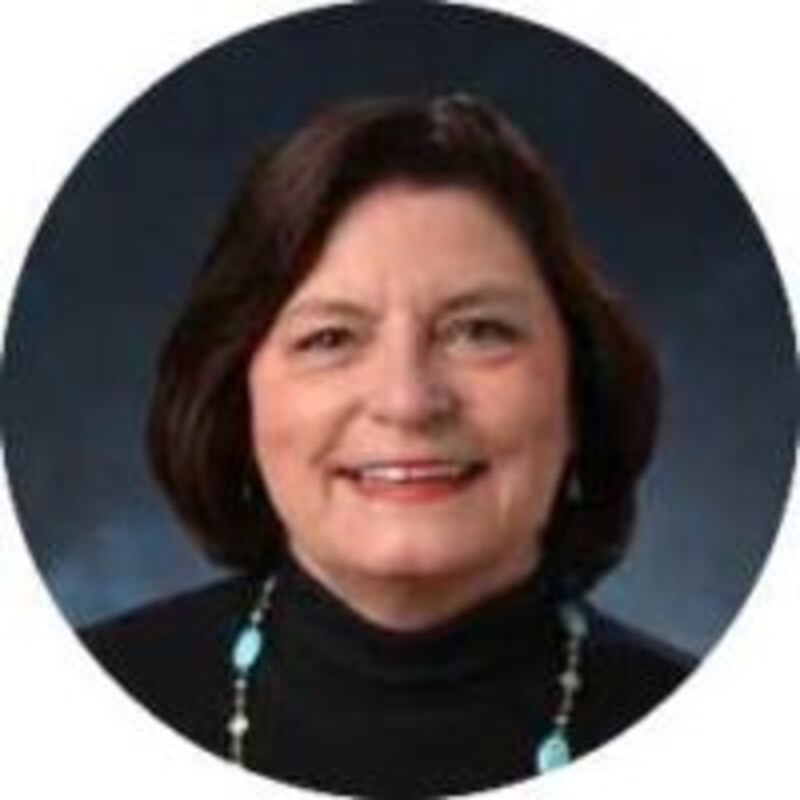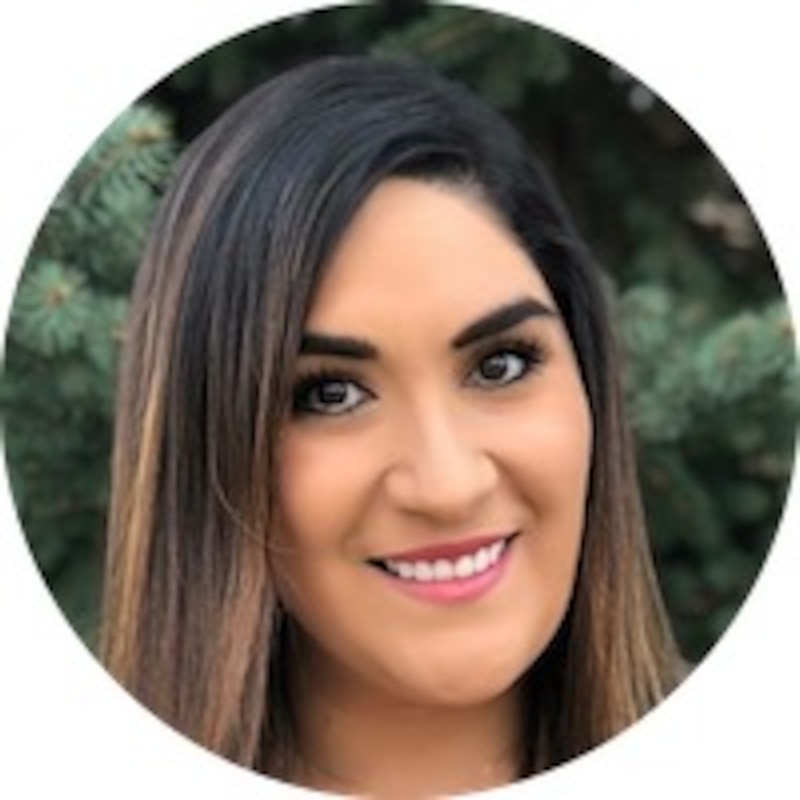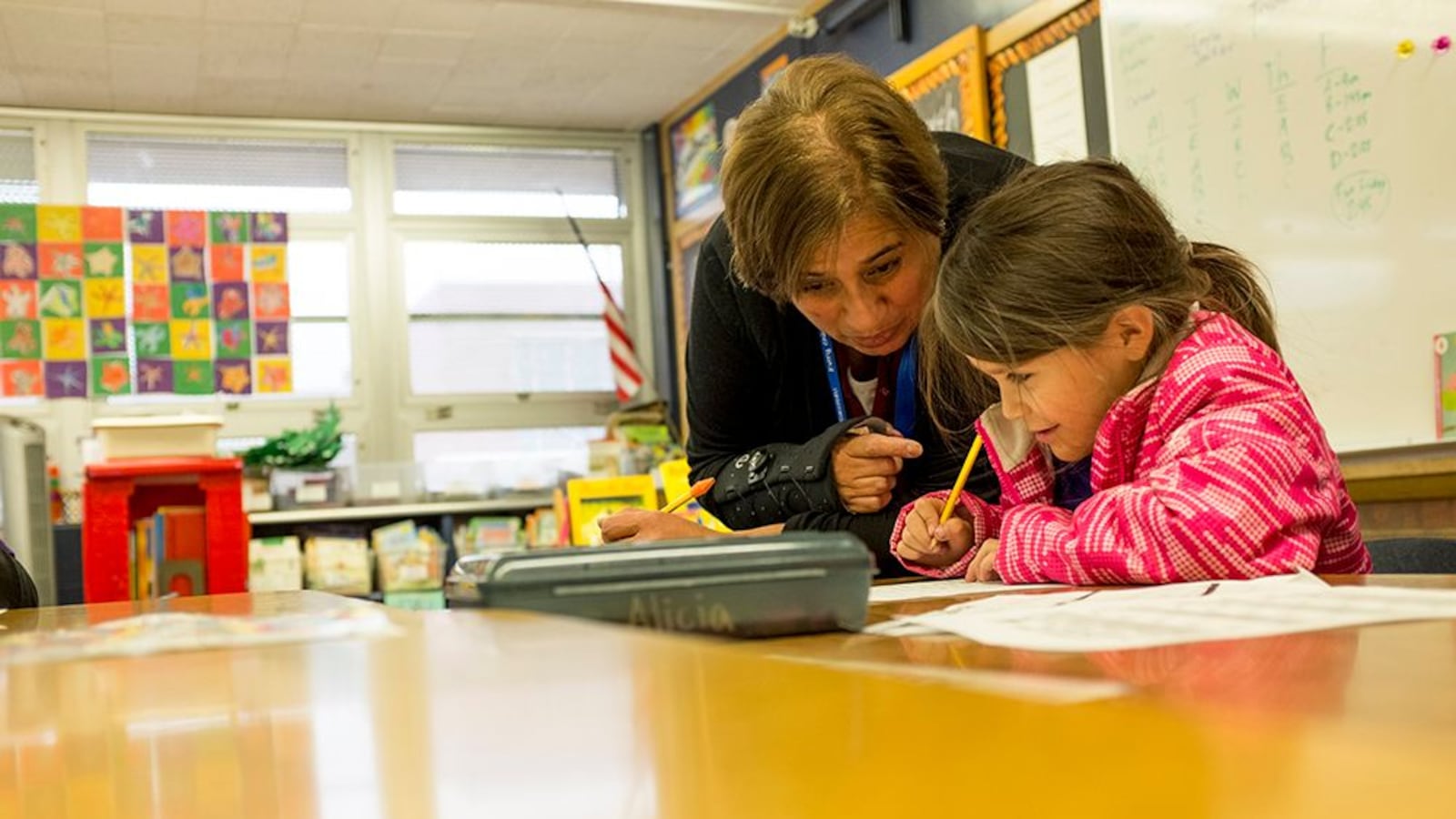School funding in Colorado is a mess. We spend $2,800 less per student than the national average when regional cost differences are taken into account. Since the Great Recession, lawmakers have withheld roughly $7.5 billion that would have otherwise gone to schools. Our school funding formula often provides more state money to rich districts than to poor ones, and it doesn’t account for the higher needs of students with disabilities, those who are identified as gifted, or those who are learning English. Money doesn’t always align with what students need, and community members rarely have a clear idea of how money gets spent.
Colorado voters have been asked to approve a $1.6 billion tax increase on high-income earners and businesses to put more money into public education. Lawmakers have been studying and debating how to change the way money is distributed to schools to make it fairer and more responsive to student needs. But any changes are likely to be politically challenging.
We asked a group of teachers, school leaders, advocates, and academics to tell us what they think is missing in the school funding conversation and what a better school funding system would look like. Here’s what they told us:

Sara Jean Banks: Teachers know what their students need and deserve a voice in budgeting — Read More

Kelly Caufield: Our school funding model doesn’t prepare students for work or college— Read More

Kathy Escamilla: Putting more resources into bilingual education would help all students — Read More

Gladys Soto: We’ll have inequity until the people making decisions look more like our students — Read More

Fatin Ahmad: Lack of funding for preschool leaves children and child care centers at risk— Read More

Walt Cooper: School funding should account for the different needs of different students— Read More

Douglas Bissonette: Zip code should not determine educational opportunities— Read More
Sara Jean Banks: Teachers know what their students need and deserve a voice in budgeting
As a teacher, let me offer one simple solution: allow teachers to have a voice in their school’s budget.
I am not advocating that school leaders hand over their role to lead, prioritize, and make important decisions about spending. What I am advocating for is that teachers have input and be informed of where and how money is being spent.
I have worked at two very different schools — a large, district-run public school with a large operating budget and a very small, alternative charter school with a very small operating budget. At the larger school, we had no say in how money was spent, nor did teachers ever see the budget. Most schools run in this manner. At the other school, teachers have access to the budget and are encouraged to see where the money is being spent. As the principal said: “Your budget shows your priorities, and we have nothing to hide.” That school spends almost all of its tiny budget on great teachers. As one of those teachers, I can say that seeing that budget made me know that I was valued.
Teachers are also asked how they want to spend money. I remember a staff meeting in which the new building principal told us that we needed to decide where to spend money that was left over after salaries and operating costs had been accounted for. There was silence in the room; I think we were all in shock. Our heads filled up with our Christmas wish lists: paraprofessionals, computers, classroom supplies, and field trips. But the principal kept it simple: Submit your ideas, then vote.
As a teacher, I actually know what we need at the ground level for my students to be successful. I have seen fellow teachers with 30 students in a room and 14 of those students have disabilities that require individualized education plans. That teacher knows she needs an extra person in the classroom to meet the individual needs of those students. I have walked into a school without a single working class set of laptops. Those teachers know they need that technology if they are going to prepare students for a world that centers and runs on technology. The average teacher contributes more than $500 to their school’s budget in the form of classroom supplies — as teachers, we have earned a spot at the table.
Sara Jean Banks teaches high school science at Academy of Urban Learning and is a Teach Plus Policy Fellow alumna.
Kelly Caufield: Our school funding model doesn’t prepare students for work or college
A junior in a Colorado high school might be taking a full load of classes but spend little time on her school’s campus. That’s because she’s at the nearby community college for part of the day getting dual credit for her advanced English and math classes, interning at a local technology startup where she’s learning computer science and essential skills training, and spending some afternoons at art museums with local artists learning about history and design theory.
This story shouldn’t be unique. It should be the experience that we redesign school funding to support. If Colorado employers could redesign high school funding in Colorado, we would invest in what it takes for students to be successful as lifelong learners. That sounds simple, but it represents a fundamental change that meets significant resistance.
Many early college high schools, which allow students to obtain college degrees and work credentials, follow a similar funding model as described here, but we think all Colorado schools should consider this structure. Our current funding model isn’t designed to prioritize postsecondary and work-based learning opportunities in a systemic way where all students receive these opportunities. For example, while over 90 percent of school districts offer concurrent enrollment, only 32 percent of high school juniors and seniors participated in these courses.
Public funding of high schools must be structured in a way that acknowledges that learning isn’t always going to happen on a traditional school campus and that a high school diploma alone is no longer sufficient to set students on a path to true self-sufficiency.
Funding students rather than a system means funding that is flexible and split into three distinct pieces. In our ideal model:
- One third of funding for each student would go to the high school to pay for core academic courses.
- Another third would pay for students to take courses leading to postsecondary credit through concurrent enrollment or Advanced Placement, to name a few.
- And the final third would go to fund work-based learning experiences. These funds could cover transportation costs, industry certification exam fees, and stipends for time spent in the workplace, or serve as a financial incentive for more employers to accept and place interns or apprentices.
Because this would represent a substantial shift in how high schools are funded, school districts would voluntarily choose whether to participate. But we’re confident that restructuring school funding in this manner would show dramatic results. Those districts electing to participate would be viewed as forward-thinking leaders and worth investing in.
Most of all, more students would have a high school experience that truly prepares them for the next stage of life.
Kelly Caufield is the vice president of government affairs for Colorado Succeeds, a nonprofit, nonpartisan organization that brings business leaders across the state together to ensure all of Colorado’s children are educated to their greatest potential.
Kathy Escamilla: Resources for bilingual education would help all students
Every indication tells us that the 21st-century workforce will need more bilingual workers. In 2010, there were roughly 240,000 job postings aimed at bilingual workers; by 2015, that figure had ballooned to approximately 630,000. Further, employers seek bilingual workers for both low- and high-skilled positions. In 2015, 60 percent of the jobs with the highest demand for bilingual workers were open to individuals with less than a bachelor’s degree. Meanwhile, the fastest growth in bilingual listings is for so-called “high-prestige” jobs, a category including financial managers, editors, and industrial engineers.
The mission of public schools has been to prepare their students for careers and the workforce. But right now, Colorado schools don’t have the resources to support the dual-language programs that would allow children coming to school as monolingual English speakers or those who speak other languages at home and need to add English to their repertoire to gain the skills to take advantage of these opportunities. Colorado’s school funding formula doesn’t even account for the full needs of students learning English.
As Colorado works to insure that children are competitive for 21st-century careers, opportunities to participate in dual-language programs and to earn the state’s seal of biliteracy present one of the best opportunities to become bilingual, biliterate, and cross-culturally competent. This is true for all children, regardless of the language they speak at home.
Colorado schools need more resources if they are to expand dual-language programs that would benefit monolingual English speaking students as well as students labeled as English language learners. Additional resources could double or triple the numbers of students in Colorado earning the seal of biliteracy and expand the number of school districts that would be able to offer this programming. Our students deserve this opportunity.
Kathy Escamilla is a professor of education at the University of Colorado Boulder. She holds the Bob and Judy Charles Endowed Chair. She specializes in bilingual/dual language education for Spanish-speaking students in U.S. schools.
Gladys Soto: We’ll have inequity until the people making decisions look more like our students
Putting more money into the school system will not solve the inequity we see in school districts in Colorado, especially when thinking about bilingual students, non-English speakers, and the parents of these students, who represent the first generation of their family in the U.S. Education looks different for everyone, therefore a one-size-fits-all solution is not reasonable, especially when we take into account cultural differences. I would like to challenge the way funding is currently being spent and distributed because priorities are set by those who don’t look like the students they represent.
We have a system that does not enable our students to be successful. Education is not just about books and testing. Education molds and shapes future leaders and citizens. Education is not just academic subjects, but also respect, responsibility, and civic engagement.
When we invest in our schools we have to think about the big picture. We need to focus on education as not just basic skills for our students but also as education for the parents and caretakers of these students. When we teach and educate our parents to become advocates for their own students, we will then have much stronger support for teachers in the classroom and for administrators. As a bilingual teacher with a master’s degree in linguistic education, and now as a manager of education programs and advocacy for CLLARO, it is evident that there is a need to educate and work with parents as lifetime partners and part of “the team.”
We need to find a solution to how schools budget the money spent in their buildings. Teachers are underpaid and have to manage big class sizes. A possible solution could be to have teams of teachers in classrooms with teacher leads and teacher assistants. Those assistants could be parents who are ready to be part of the education system. We need a shift in our culture where parenting is not separate from schooling; they go hand in hand. The possibilities are endless. Parents could be trained to become mentors, facilitators, coaches, or even counselors. When we talk about investing in our schools, the first step should be to evaluate the desired long-term outcomes. Putting resources into training and employing engaged parents — and giving them a voice in how we spend our education dollars — would create successful schools, strong communities, and a competitive country at all levels.
Gladys Soto leads education policy advocacy and trains and organizes parents to be advocates with CLLARO, the Colorado Latino Leadership Advocacy and Research Organization. She taught for eight years in Denver Public Schools, and has served as vice-president of the Colorado Association for Bilingual Education.
Fatin Ahmad: Don’t leave preschool out of the school funding discussion
Lack of funding for early child care centers in the private sector and narrow income-eligibility guidelines for assistance programs create problems of access and affordability. Sunshine Academy, the child care center where I work, is a small for-profit center located in a high-needs community in Denver. The center is able to meet operating costs and provide high quality care by working with various programs such as the Colorado Child Care Assistance Program, Denver Preschool Program, and Head Start. Without these programs, the center is unable to operate and meet the demands of the community. However, the current state income-eligibility guidelines for these programs have become a barrier for many families to access tuition support.
Hardworking families who make minimum wages are unable to secure economic stability and advancement as they face the decision of leaving their jobs to watch their children. The income requirements make it difficult to enroll qualified families in our center, which subsequently make it difficult for our center to pay overhead costs such as teacher salaries. Child care in Colorado is a mixed-delivery model, with the child care industry made up of one-third nonprofit child care organizations and two-thirds being privately owned or small businesses. Early childhood slots in public schools are limited. Families who cannot get in should have the opportunity to enroll their children in quality-rated child care centers in their neighborhoods, Otherwise, many children will not have the chance to gain valuable early learning experiences, and families won’t be able to achieve financial stability. Private and small-business child care centers such as Sunshine Academy contribute to the community by hiring diverse staff, paying taxes, and investing in quality training and education for teachers. Such actions are not affordable or possible without access to funding.
Private and small-business child care centers must be included in public funding for education as they provide access to valuable early experiences, meet the child-care needs of communities, and are key actors in the state’s economic growth.
Fatin Ahmad is the assistant director of Sunshine Academy in Denver. She is also pursuing a master’s degree in early childhood education at the University of Colorado Denver.
Walt Cooper: School funding should account for the different needs of different students
The current system really doesn’t, in any significant or meaningful way, account for the myriad challenges many of today’s students face and the continually growing responsibilities and expectations placed on teachers and schools. We know that students with special needs, students who are emergent English speakers, students who are gifted and talented, students who are living in poverty, and others need additional time and attention to fully meet their needs, and these are both resource dependent. Yet, these are facets of our current funding system that are the most neglected.
When our current funding system was designed, the safety and security measures that most districts attempt to implement and the level of mental health supports that students need, just to name a couple of examples, weren’t even on anyone’s mind. Now, they dominate almost every conversation about serving our kids and their families.
If we are to truly serve the needs of all of our students in all areas of our state, we need a better school funding system that not only significantly increases the resources available for our public schools, but also seeks to distribute those resources in a fair and equitable manner.
Walt Cooper is the superintendent of the Cheyenne Mountain School District in Colorado Springs and helped lead an effort by Colorado superintendents to rewrite the school finance formula. He is Colorado’s 2018 Superintendent of the Year.
Douglas Bissonette: Zip code should not determine educational opportunities
Our state education funding system is broken and needs to be fixed. The biggest roadblock to improving the system is complexity. Our funding system is deeply convoluted. It’s difficult to understand and nearly impossible to explain, whether in a 30-second elevator speech or 30-minute presentation.
Simplicity should be the goal. So should fairness. As taxpayers, we should all be able to understand and explain where the money comes from and where it goes.
Among the fixes needed, one is the source of money and another is the destination. Property wealth takes many forms around the state and is a major driver for education funding. Our system needs to better account for these differences. Zip code should not determine educational opportunities.
For example, one school district in Garfield County generates $262 per student for every mill of assessed valuation, while the neighboring district generates more than four times that amount, $1,153 per student. The result is that one district gets far more value from a local tax measure than the other. An even more dramatic example is Rocky Ford in Otero County where 1 mill of assessed valuation only generates $44 per student.
Most of Colorado’s rural schools are severely underfunded compared to many in other settings. They don’t have the resources to be competitive. The districts with the lowest salaries are all rural and provide compensation that is up to 25 percent lower than the cost of living. This makes it hard to attract and keep teachers. Living in rural Colorado should not limit educational resources and opportunities for children.
Colorado needs a funding system that adequately deals with vast disparities in property wealth and mill levy rates, while also recognizing that geography and distance cannot be overcome by redrawing boundaries. Economies of scale are real. Rural schools can’t spread fixed costs across large numbers of students, optimizing student/teacher ratios and infrastructure costs.
Rural schools have no choice other than to be efficient and adaptable with their funding. Any close observer will agree. However, this is not without opportunity and resource costs to rural students who need quality educational opportunities. Investment in rural students and rural Colorado must be a key element of any new education funding system.
Douglas Bissonette is the superintendent of Elizabeth School District in Elizabeth, Colorado. He was previously a superintendent in Ridgway. In addition to 16 years as a Colorado school district superintendent, Bissonette has more than two decades of experience in education at the university level, in the corporate world, and abroad.


